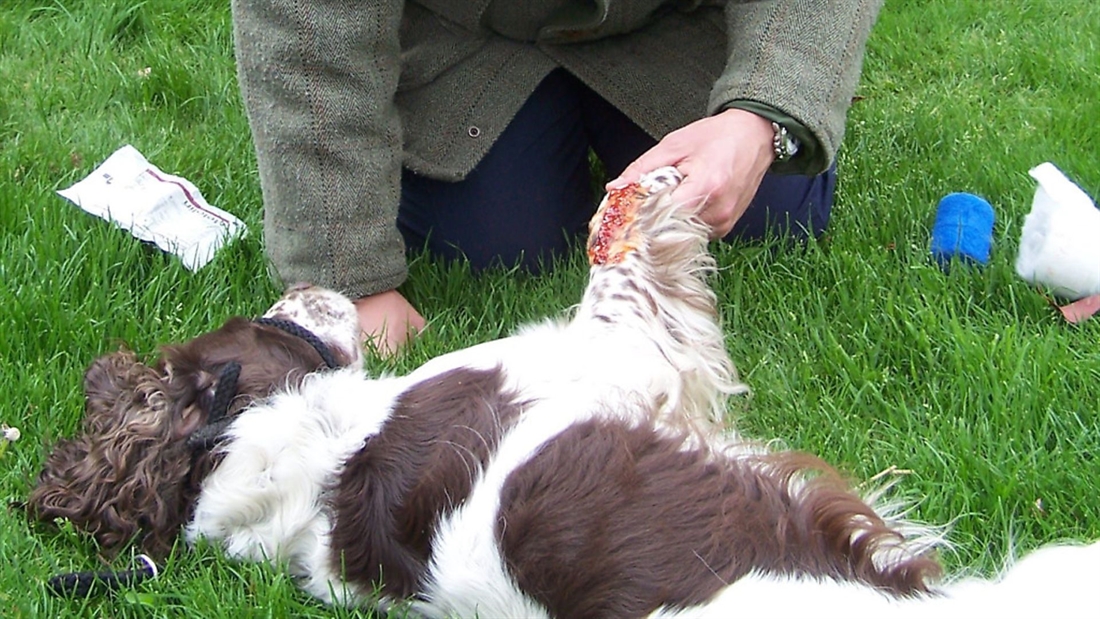How to bandage your dog’s wound

Our gundog vet Vicky Payne provides a step by step guide to bandaging wounds, in case your gundog suffers an injury while out working in the field
Bleeding wounds are one of the things that people most want to learn how to deal with on first aid courses. Knowing how to stem bleeding, assess wounds, and apply bandages can reduce the risk of further injury to your gundog and make treatment easier.
It is always a worry when your dog comes back seemingly covered in blood. First, check that the blood is from your dog and not from game it has been retrieving! Even small wounds can bleed a lot, and if your dog is wet (and white) a small amount of blood can go a long way. Nicks to the ear flap can be some of the most dramatic, and can be hard to stem. Bleeding might stop if you pinch the wound with your fingers for a minute or two, but a shake of the head or starting work again will usually dislodge the clot. I always have some tights in my pocket first aid kit as they can be used to make an emergency head bandage. If bleeding continues your vet may need to stich or glue the wound.
The amount of blood isn’t always a good indication of how severe a wound is. Sharp cuts will bleed copiously, whereas blunt tears may not bleed much at all. It is important to be able to tell venous bleeding from the more dangerous arterial bleeding. A severed artery will pump out very bright red blood. If you suspect arterial bleeding put a thick pad over the wound and hold it firmly before bandaging it in place. If the blood soaks through add more padding and bandage over the top. You might not have enough in your first aid kit and may need to use scarves or clothes instead. If you can’t stem the bleeding with bandaging, you can consider a tourniquet. This is another good use for the tights in your pocket! Only tie them tight enough to slow the bleeding to a drip; if you tie them too tightly the circulation will be cut off completely and the tissues might be damaged.
Bandaging can also be useful for less serious wounds to reduce blood loss, keep the wound clean, and to prevent further damage from the dog licking or chewing the wound [as illustrated]. Don’t apply any creams or powders to wounds that might need stitching and don’t leave wounds until the next day. Repairs are usually easier on fresh wounds. Call the closest vet before you leave the shoot and have someone in the car with you to look after the dog.
Wounds on the body can be protected in a similar way with a dressing, bandage padding, and cohesive bandage, but this can take some time. A T-shirt or a towel wrapped around the body can make a good alternative.
Glue and staples
Some gundog handlers advise carrying tissue glue or skin staples to repair wounds in the field. This is not something that I recommend as it is impossible to get wounds sufficiently clean in the field. Dirty wounds initially seem to heal well, but break down or develop infections later.
Tissue glue can delay the healing of wounds if not used correctly so if this is something you wish to carry, ask your vet to train you in its proper use.





